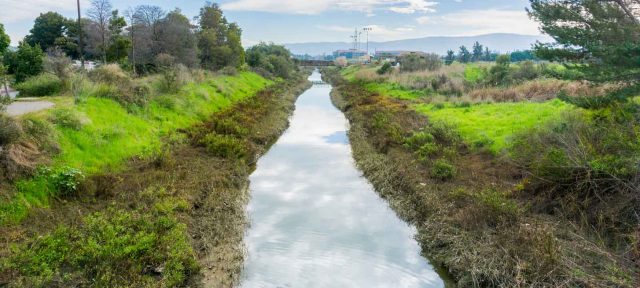Selecting the right erosion control application for your natural channel or stream restoration project can mean the difference in creating a sustainable design and compromising your well-thought-out structures and grading. Depending on the variability in flows, types of soils and material present in the project area, and realistic expectations in revegetation success rates, proper erosion control techniques can help ensure the long-term success of your design and promote recovery of the watershed or channel corridor.
Enhancing Revegetation Growth
More often than not, choosing a seed mix compatible with the native vegetation and soil characteristics present in the channel corridor will increase the success rate of your revegetation approach. While planting live stakes and seeding alone can help reduce erosion over time, robust erosion control blankets can help protect the plantings and seed, encouraging growth immediately after construction when the revegetation application is most vulnerable to erosive flows. As seeds germinate and growth begins, the blankets allow the fragile grasses and plantings to thrive. Utilizing a moderately strong, open-weave coconut erosion control blanket such as the GEOCOIR® 400 in floodplains where design velocities are expected to be under 8 feet per second will help protect exposed soils from eroding and encourage the reestablishment of vegetation. As root systems develop and the blanket degrades over time, banks and floodplains will return to their natural stable condition.
Protecting Stream Beds and Overbanks
When velocities are expected to be high in silty or sandy channel beds and overbanks, a rugged erosion control blanket such as the GEOCOIR® 700 or GEOCOIR® 900 can help reduce particle movement while adding additional stability. With a flow resistance of up to 10 feet per second and 15 feet per second respectively, these applications provide additional protection to the channel while allowing live plantings to establish themselves over a period of up to 5 years before complete degradation of the blanket occurs. The weave pattern is conducive to live stakes being planted after the blanket is installed; Meaning if construction is completed but the season or weather is not ideal for transplants, revegetation efforts can be delayed and completed when conditions improve.
Additional Erosion Control Needs
Steep embankments, harsh environments, and volatile flows create distinct erosion control needs. While many products and applications exist, there are minor differences and nuances in materials and weave patterns. Some blankets and geotextiles are more conducive to revegetation while others may be more appropriate for infrequent, highly erosive runoff. Regardless of your project location or erosion resistance demands, Belton Industries, Inc., can provide expert advice and recommendations based on your unique application. From post-fire mitigation to new developments, we have a product suited for your project needs.
For any additional questions or detailed product information, please contact us and we’ll be happy to help ensure your next project is a success!

